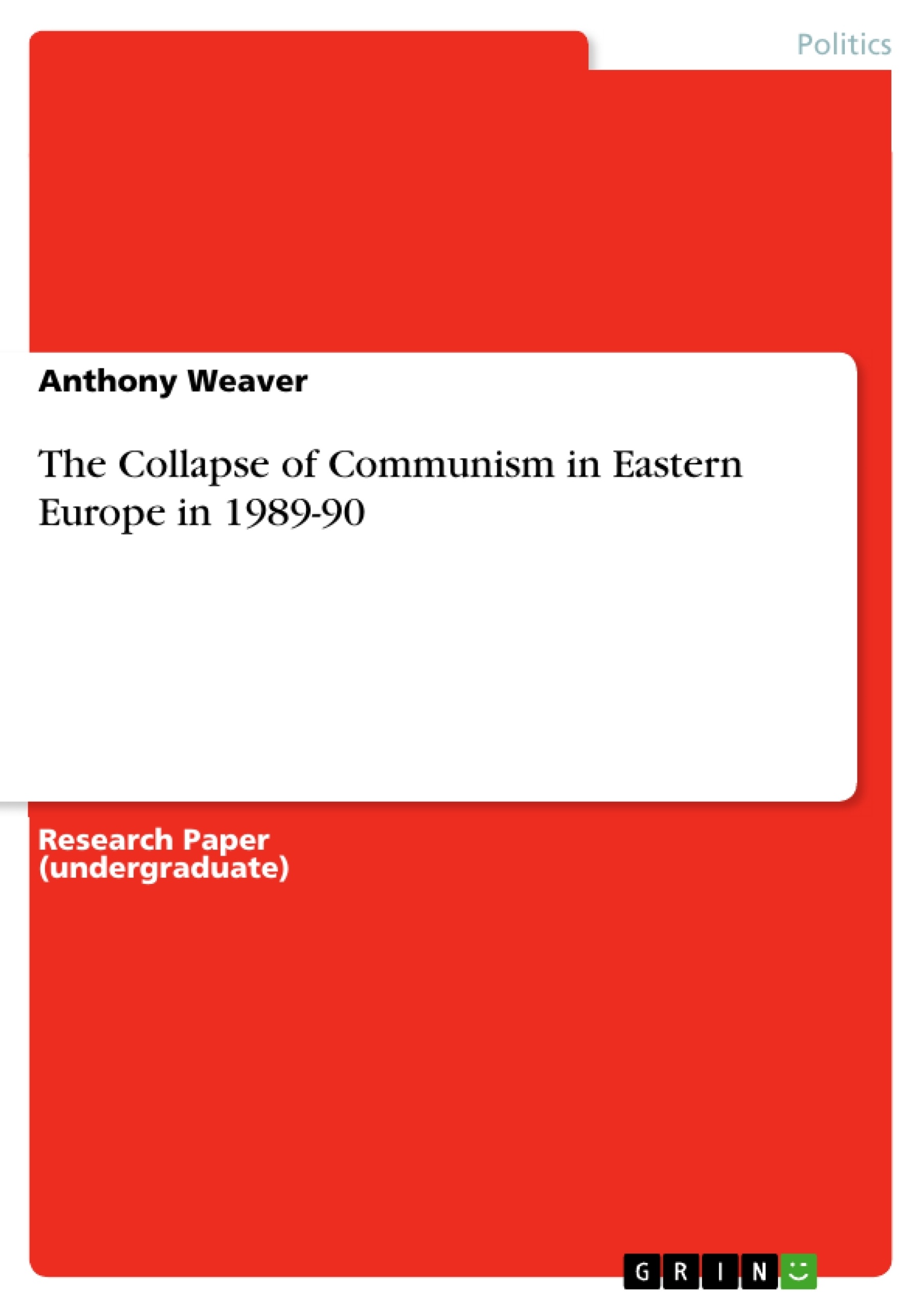This paper outlines the historical collapse of Communism in Eastern Europe, and gives the main factors behind the rapid collapse of the communist regimes in the years 1989 and 1990.
1989 saw the Communist Satellite States of Eastern Europe swept away by a dramatic, rapid series of popular revolutions, in what was dubbed an annus mirabilis, or year of miracles. The Revolutions of 1989-90 took the whole world by surprise, as the Soviet-style systems which had seemed so deeply entrenched were suddenly swept away; even if signs of systemic decay had been apparent for many years. The revolutions took place first in Hungary and Poland and then rapidly in East Germany, Czechoslovakia, Bulgaria and Romania (Schopflin: 1993: P224).
Inhaltsverzeichnis (Table of Contents)
- The Collapse
- Hungary
- Poland
- East Germany
- Czechoslovakia
- Romania
- Bulgaria
- The Factors involved in the collapse
- Gorbachev's reforms
- The Role of the Media
- The Role of the Crowd
- Economic Decay
- The Failure of Ideology
- Frequent Leadership Divisions
Zielsetzung und Themenschwerpunkte (Objectives and Key Themes)
This text offers a comprehensive analysis of the historical events that led to the collapse of communism in Eastern Europe during 1989-90. The author provides a detailed account of the revolutions that took place in each of the satellite states, emphasizing the key factors that contributed to their demise. The work examines both the immediate causes of the collapse and the underlying factors that contributed to its inevitability.
- The role of popular uprisings and revolutions
- The impact of Mikhail Gorbachev's reforms in the Soviet Union
- The significance of economic decay and its impact on state legitimacy
- The influence of Western media and communication technologies
- The failure of communist ideology and its inherent vulnerabilities
Zusammenfassung der Kapitel (Chapter Summaries)
The text begins by outlining the sequence of events that led to the collapse of communism in Eastern Europe, starting with the revolutions in Hungary and Poland, and then moving on to East Germany, Czechoslovakia, Bulgaria, and Romania. Each country’s story is unique, highlighting the specific challenges and opportunities presented by their respective communist regimes. The author then proceeds to analyze the key factors that contributed to this collapse, highlighting the impact of Gorbachev's reforms, the role of the media, the influence of popular uprisings, economic decay, and the failure of communist ideology.
Schlüsselwörter (Keywords)
This text focuses on the collapse of communism in Eastern Europe, exploring the historical events, political factors, and social dynamics that contributed to this pivotal period. Key concepts include the revolutions of 1989-90, the impact of Gorbachev's reforms, the role of the media, popular uprisings, economic decay, the failure of communist ideology, and the impact of leadership divisions within the communist regimes.
- Quote paper
- Anthony Weaver (Author), 1997, The Collapse of Communism in Eastern Europe in 1989-90, Munich, GRIN Verlag, https://www.grin.com/document/1500200



